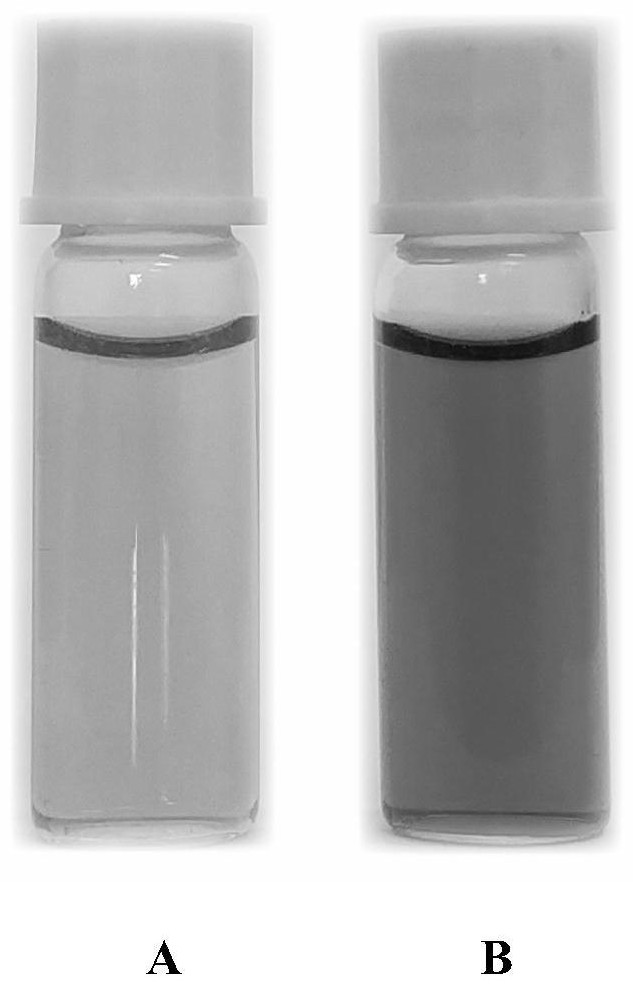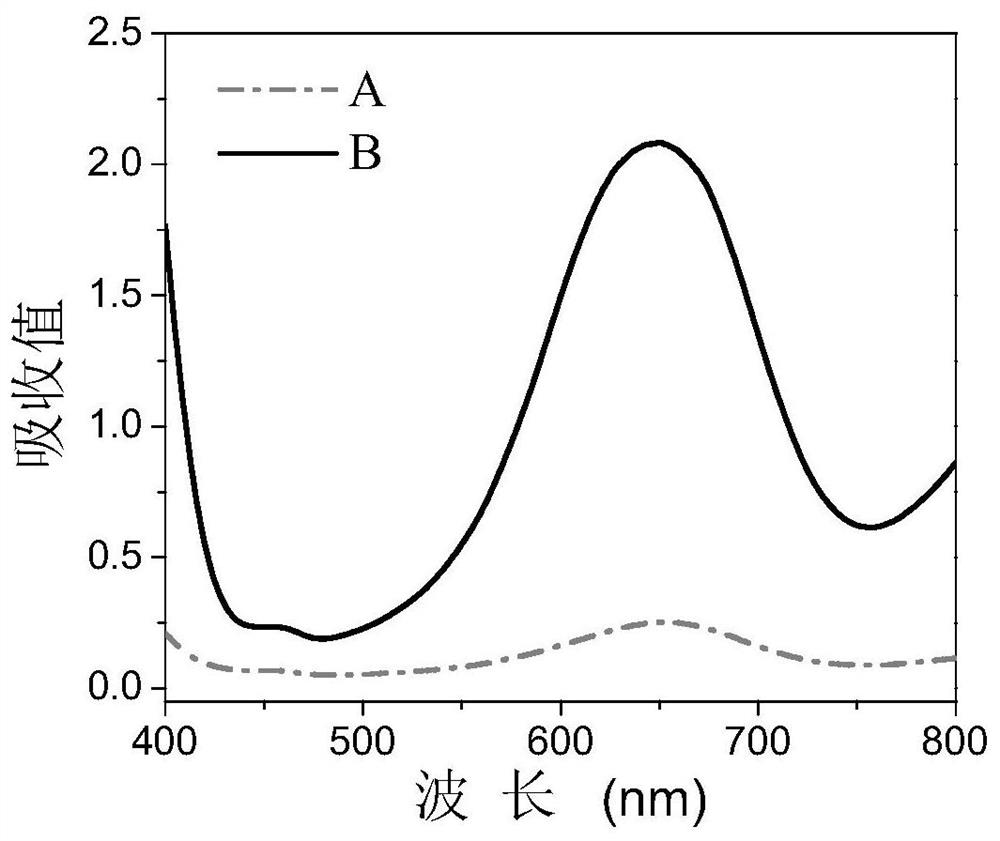Determination method of cerium ion based on nano-gold simulated peroxidase
A technology of peroxidase and nano-gold, which is applied in the field of analytical chemistry and nanometers, can solve the problems of being easily interfered by environmental factors and poor sensitivity, and achieves the effects of simple and fast preparation process, good selectivity and high detection sensitivity
- Summary
- Abstract
- Description
- Claims
- Application Information
AI Technical Summary
Problems solved by technology
Method used
Image
Examples
Embodiment 1
[0037] 500 μL of 0.1 g / L chloroauric acid aqueous solution was diluted with 39.5 ml of water, and 0.8 ml of 0.1 g / L sodium borohydride aqueous solution was added under vigorous stirring (the addition time was controlled within 5 minutes), and the color of the reaction solution was From light yellow to wine red, continue to stir rapidly in the dark for 1 hour. The obtained nano-gold solution is stored at 4°C, and the nano-gold can be kept for at least two months and is relatively stable. All glassware used in the above process was soaked in aqua regia, washed thoroughly with double distilled water, and dried.
Embodiment 2
[0039] 0.2 mL of Ce at a concentration of 1 μmoL / L 3+ Add 0.05 mL of the nano-gold solution prepared in Example 1 to the solution, mix well, and then add 0.65 mL of acetate buffer solution (pH=5, 100 mmoL / L) and 0.05 mL of the solution at a concentration of 5 mol / L to the mixed solution. L of hydrogen peroxide and 0.05 mL of 3,3',5,5'-tetramethylbenzidine hydrochloride with a concentration of 8 mmoL / L were mixed and incubated at 25°C for 10 minutes. Set without Ce 3+ Blank control group. Depend on figure 1 It can be seen that adding Ce 3+ After that, the color of the catalytic reaction system solution was significantly darkened (in the figure A: nano-gold; B: nano-gold + Ce 3+ ).
Embodiment 3
[0041] 0.2 mL of Ce at a concentration of 1 μmoL / L 3+ Add 0.05 mL of the nano-gold solution prepared in Example 1 to the solution, mix well, and then add 0.65 mL of acetate buffer solution (pH=5, 100 mmoL / L) and 0.05 mL of the solution at a concentration of 5 mol / L to the mixed solution. L of hydrogen peroxide and 0.05 mL of 3,3',5,5'-tetramethylbenzidine hydrochloride with a concentration of 8 mmoL / L were mixed and incubated at 25°C for 10 minutes. Set without Ce 3+ Blank control group. Depend on figure 2 It can be seen that adding Ce 3+ After that, the absorbance value of the catalytic reaction solution at 652 nm (A 652 ) significantly increased (A in the figure: Au nanoparticles; B: Au nanoparticles + Ce 3+ ).
PUM
 Login to View More
Login to View More Abstract
Description
Claims
Application Information
 Login to View More
Login to View More - R&D
- Intellectual Property
- Life Sciences
- Materials
- Tech Scout
- Unparalleled Data Quality
- Higher Quality Content
- 60% Fewer Hallucinations
Browse by: Latest US Patents, China's latest patents, Technical Efficacy Thesaurus, Application Domain, Technology Topic, Popular Technical Reports.
© 2025 PatSnap. All rights reserved.Legal|Privacy policy|Modern Slavery Act Transparency Statement|Sitemap|About US| Contact US: help@patsnap.com



